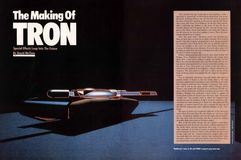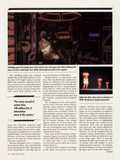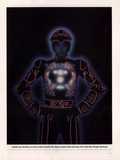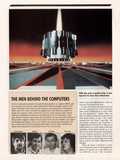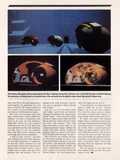Let’s pretend that the technology of moviemaking is really a spaceship. It “blasted off” in 1898 from the Menlo Park, New Jersey laboratory of Thomas Edison, who shot the first close-up (a guy by the name of Fred Ott sneezing at the camera) and the first movie with a story (The Great Train Robbery). By the late 1950s, special-effect technology was halfway to the moon: It was the era of Godzilla, Klaatu, and 3-D glasses. By 1977, the year George Lucas gave us Star Wars, movies had landed on the moon. But today we see the moon as our next-door neighbor in space. There are more distant worlds for us to explore.
Now—five years later—American movies are hurtling past Mars on their way to a drive-in on Alpha Centauri. Tron is proof positive that the computer programmer’s art is racing alongside the animator’s art at Warp Factor Five. It’s no accident that the movie was brought to the screen by Walt Disney Productions, because old Walt was a true visionary. If he were alive today, he’d probably proclaim Tron his most exciting project since the days of the Davy Crockett coonskin cap.
Without taking anything away from the cast, which include Jeff Bridges, Bruce Boxleitner and David Warner, the unique thing about Tron is that you’re looking at ideas, not models. In Star Wars, the warships piloted by Luke and Darth Vader were in fact tiny models photographed by a computer-controlled moving camera. But in Tron, there aren’t any models at all. The motion is conceived and captured by an imaginary “camera” defined by the computer. The real camera is only used to take a picture of the frame-by-frame action choreographed by the computer’s imaginary camera.
[…]
